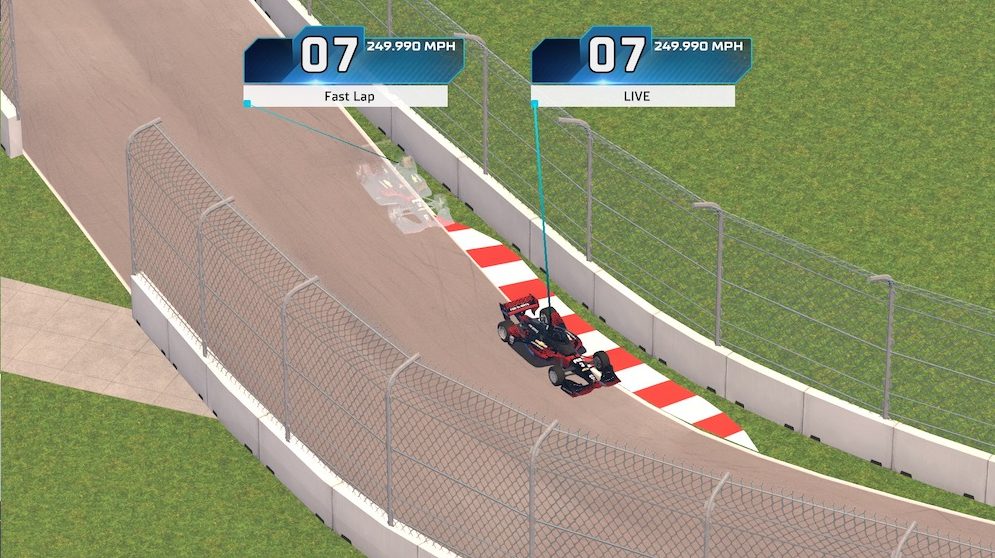A new feature in the fledgling relationship between the IndyCar Series and FOX is the deployment of “Ghost Car” technology.
As seen in its production of NASCAR events and in its Major League Baseball broadcasts with showing the speed, arc, and distance of home runs, FOX Sports and its partner Sports Media Technology (SMT) have a well-developed product to unveil in IndyCar, which is a first for the series.
The ability to do performance comparison overlays with one car’s pace and progress compared to another is only the start of what FOX Sports SVP of Graphic Tech/Innovation Zac Fields has applied to IndyCar, and once the first session gets under way at St. Petersburg, more of the system’s features will be brought into the broadcast.
Using a separate GPS transceiver specifically for the SMT system, each team has incorporated it into the chassis atop where the drivers’ legs are housed; it provides location and speed. In SMT’s dedicated antenna connection, data is also taken from the car’s onboard computer system which feeds RPM, throttle position, brake pressure, steering position, and gear position back to FOX Sports, where it’s processed and surfaced when desired on the broadcast.
With lots to learn about the new Ghost Car capabilities — which extends far beyond overlays — coming to IndyCar on FOX, Fields took RACER through the system and what fans might see during its debut season with the series.

ZAC FIELDS: “It’s very much been a desire for (FOX Sports CEO) Eric Shanks to be able to track the cars, to be able to locate them with our pointers that we’ve been using for quite some time. We feel it’s very important. In order to do that, we needed the technology to be able to track the cars, and we’ve been working with SMT.
“It’s very much of a joint effort between ourselves, SMT and IndyCar to make sure that we have the proper technology, so SMT did some testing the end of last year where they put their vector-based system in the cars. And the components that will now go on an IndyCar are the GPS antenna and the telemetry antenna, and SMT have (receiver) devices spaced out around the track to be able to put the car in 3D space. We’ve been able to benefit from that like you’ve seen (in NASCAR) with pointers, but it also has this technology where you can overlay what a car is doing or has done versus someone else. We’ve been pushing them, and they’ve delivered a lot in terms of improvements, and some of them are not just singular laps, but tracking trends.
“I think that’s one of the interesting things that you’ll see on some of the road courses is where some of these driving lines really stand out and show two different ways being taken through a corner. Represent a real car, and the ghost car would be what you’re comparing it to. Perhaps it was the last lap versus the leader and second place where you’ll see an example of driving lines.”
Although FOX’s Ghost Car tech will be a new feature for IndyCar broadcasts, it’s nothing new for IndyCar teams. For more than a decade, a service provider by the name of Infiniti Video Systems has mounted tracking cameras around every circuit on the calendar and provided teams who subscribe to their service with footage from key corners after each session, and based on the comparison of their choosing, Team A can see how its drivers gained or lost against a rival with a “ghost” overlay.
The proprietor of IVS, former racer Dave McEntee, founded the business using technology made by Dartfish — he still carries the nickname “Dartfish Dave” in the paddock — before moving onto creating their own software. One of the upgrades was pairing IndyCar timing and scoring information with the video, which allows teams to look at when a lap was turned during the session, correlate which chassis setup changes were being used, and gain a deeper understanding of not only when fast laps were turned, but also the state of their car in the video clips.
